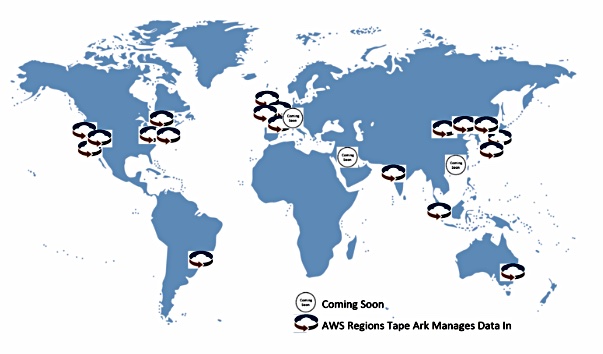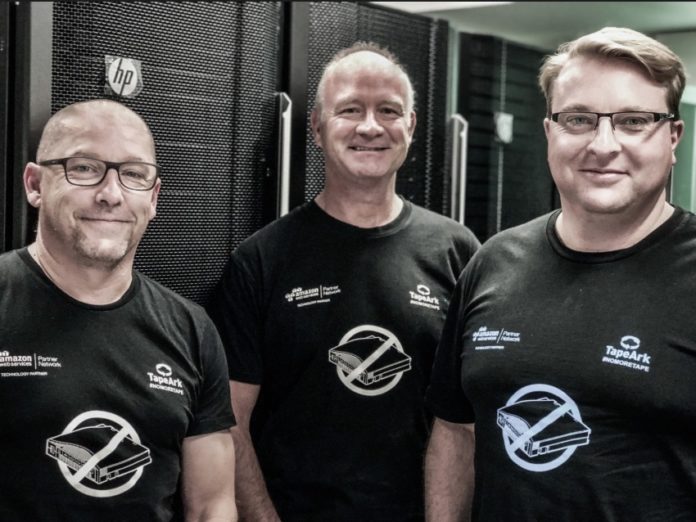Seagate wants to take data stored on tape and migrate it to the cloud for faster access. Its Lyve Data Services use Tape Ark software and technology as a backup data transfer magic carpet.
Out of nowhere, Seagate has announced Lyve Data Services as a tape data migration offering. It has teamed up with Tape Ark, an Australian company based in Perth, that specialises in tape recovery and tape data migration, for instance, getting data off tape and into AWS.
It supports most tape formats, meaning ½ inch reels and cassettes, and ¼ inch, 8 and 4mm tape cartridges, plus geophysical formats, video and film tapes as well.
Supported enterprise IT tape formats include AIT, DAT, DLT and Super DLT, Exabyte, LTO-1, LTO2, LTO3, LTO4, LTO5, LTO6, LTO7 and LTO8, Mammoth, QIC and Mini QIC, QIC, and VXA. There is a full list here.
Tape Ark has facilities in the USA, South America, Europe, India, the Far East and Australia. It currently spans 53 AWS Availability Zones within 18 Geographic Regions.

A FAQ on the Tape Ark website says it can migrate any number of tapes to the cloud: “We can move data to the cloud faster than anyone else and on a massive scale. No matter what the tape type or data format.“
The migration is nominally done at no cost, with Tape Ark getting charging a monthly fee to access the data.
AWS customers can access the data via a Tape Ark client access portal. Customers can login, search for their data or tape, select the data to restored, and either do a direct restore of the data, or request a service where Tape Ark does the restore, index or eDiscovery for them.
This is a restore-as-a-service scheme, and customers can order their legacy data via their Tape Ark portal and receive the files, folders or entire tapes through a secure download or FTP.
Tape Ark claims cloud storage is cheaper than off-site tape storage: “Offsite tape storage pays no attention to the volume of data you store, so legacy tapes (greater than 7 years old) tend to be more cost-effective in the cloud than on a shelf in an air-conditioned room, where they are inaccessible and your hardware to read them is no longer supported.”
The Seagate angle
With Seagate the data recovered from tape can be sent to “large public cloud platforms of the customer’s choice.”
Tape Ark says it: “will expand its operations into Seagate facilities globally, establishing scalable, mass ingest facilities capable of processing tens of thousands of tapes per day – by far the largest facilities of the kind anywhere in the world. These new facilities, in Oklahoma and Amsterdam, will become Tape Ark’s new North American and European operations base.”
Seagate claims that its Lyve Data Services have advanced data management expertise, without explaining what this means.
Ted Oade, Seagate director of product marketing, dramatises the background; “There are over one billion stored tapes on the planet, and the value of the data on those tapes is incalculable.”
Just a reminder, incalculable value doesn’t necessarily mean all this data is ivaluable.
Seagate’s marketing pitch is that customers can liberate zombie data trapped in tape vaults, on tapes that can be decades old, and bring it to the public cloud where it can be searched, indexed and analysed, and become useful.
They can also stop paying to maintain any no-longer supported tape formats and drives.
Seagate doesn’t explicitly say but we imagine it will split the “fee on top of your monthly cloud storage bill to ingest the data, provide access and deliver analytics and other services,” with Tape Ark.








